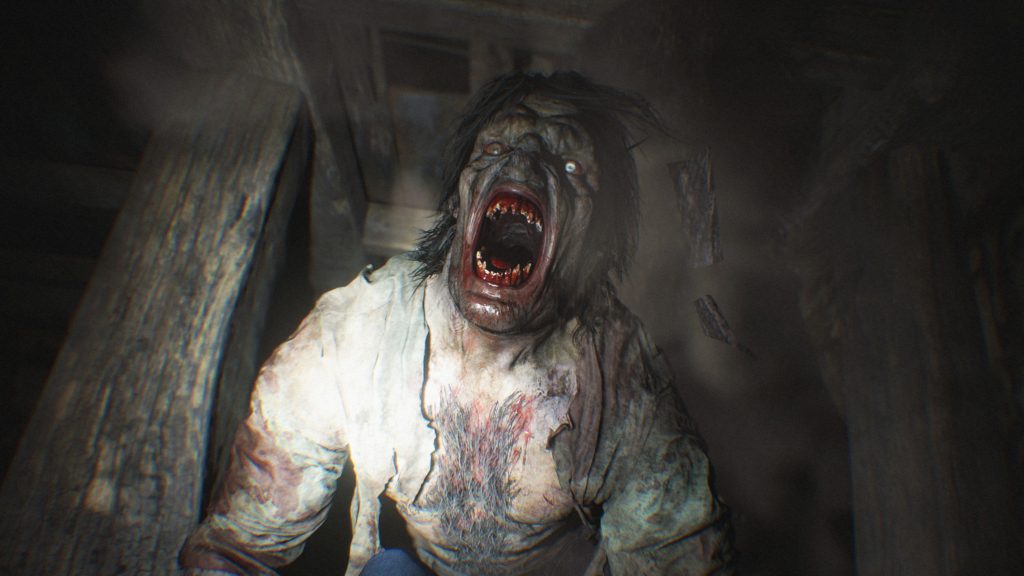The eighth Resident Evil game cranks up the gothic horror to often chilling – and sometimes hilarious – effect. The result? One of the franchise’s best efforts.
Reaching eight main iterations provides a sure sign that a games franchise has entered the realms of achieving legendary status. But doing so while continuing to evolve and innovate, without any sign of becoming a pastiche of itself, is some achievement. Village, otherwise known as Resident Evil 8, does a fine job of advancing the Resident Evil mystique.
Sure, Resident Evil had a dip in form between 2009 and 2012, when Resident Evils 5 and 6 lurched down a blind alley of Hollywood-style action, but 2017’s Resident Evil 7 functioned as something of a franchise reboot, adopting a hugely successful first-person perspective and taking the franchise back to its survival-horror roots.
While Resident Evil Village picks up where 7 left off – it keeps the first-person viewpoint and stars the same protagonist, Ethan Winters – it manages to feel different to and distinct from its immediate predecessor. That’s partly because it gleefully avails itself of any opportunity to reference past Resident Evil games, most notably the first one and Resident Evil 4, managing in the process to use that to give it a great sense of ebb and flow.
Village’s evocation of Resident Evil 4 comes in two ways. One is the presence of a fending-off move that comes in handy when enemies get too close, although it’s by no means as brutal and satisfying as the kick move that Leon Kennedy possessed in Resi 4. Perhaps more importantly, Village’s main hub area – a creepy, semi-destroyed Rumanian village — brings back intense memories of the village setting in Resi 4. Although the village itself – and the general vibe of the game – is deliciously gothic, which also induces flashbacks to the first Resident Evil game.

Resident Evil Village kicks off in full-on horror-first mode. Ethan and Mia Winters are briefly glimpsed in domestic bliss at the start of a new life in Europe, fretting about their newborn baby, Rose, before disaster and weirdness kick in – as is routinely heaped upon poor, hapless Ethan. Mia is murdered in cold blood in front of Ethan – at the hands of an unlikely baddie – and Ethan wakes up in the aforementioned village, soon discovering that Rose is in the clutches of some of its more gruesome denizens. His quest to get her back provides the game’s overriding narrative thread.
After encounters with the lycans that run rampant in the village, as well as an old crone and some short-lived survivors, Ethan gains access to the huge mansion that houses the Dimitrescus – the 12-foot-tall, bizarrely sexy, talon-fingered and utterly lethal Lady Dimitrescu (who has been creating quite a stir) and her three scary daughters. The Dimitrescu mansion has all the atmosphere of the mansion from the original Resident Evil, throwing up a similar mix of item-collection, exploration, puzzling and boss-fighting to that found in Village’s 1996 progenitor.

Horror and action interwoven
After you deal with the Dimitrescus, Village opens up – partially at first, since areas of the village itself initially remain inaccessible until you’ve found crucial items. You’re sent on a number of quests, each with its own flavour, but which tend to alternate between pure horror (in one sequence, you’re stripped of all weaponry and must conduct manic puzzle- solving in near darkness while being pursued by a terrifying giant mutant toddler-slug) and action.
While the lycans are the stock enemies you find more or less everywhere, there are also plenty of classic Resident Evil boss-battles to negotiate. It pays not to be overeager to advance the story: in the game’s latter stages, you’re given opportunities to return to the village hub and explore hidden areas, which are satisfyingly plentiful, and encourage multiple play-throughs.
One feature of those hidden areas is the presence of farm animals which, rather brutally (and amusingly, unless you’re a virtual-animal rights activist), can be shot (even the fish) and cooked into perk-generating recipes. This time around, Village’s on-the-fly crafting system – often a life-saver when ammo, typically, is scarce – feels judiciously designed, as it is accessible and not too complex.

Story-wise, Resident Evil Village has attracted some brickbats for losing the plot in its latter stages. But we don’t reckon those are entirely justified, for the simple reason that its plot is batshit-crazy all the way through. It’s certainly in keeping with the general vibe of keeping horror – and specifically, the more lunatic, disbelief-suspending end of the horror spectrum – front and centre.
In the modern way, Resident Evil Village isn’t the longest of games – we managed to spin out our first play-through to roughly 12 hours – but it does have lashings of replay value, helped by a vast array of challenges that unlock when you finish it for the first time. A post-credits sequence also hints at new and intriguing directions which Resident Evil 9 and beyond could take.
Overall, Resident Evil Village demonstrates just how much Capcom has recovered its confidence when crafting new iterations of its most beloved franchise, after the blip it suffered around the time of Resis 5 and 6. It’s both genuinely scary and at times hilariously preposterous, it mixes action, puzzling and survival-horror gameplay in a fashion which is nothing less than exemplary, and while preserving the unique Resident Evil ambience, also feels like it is advancing the franchise. In other words, it’s up there with the very best of the Resident Evil games. And if that doesn’t excite you, then we dread to think what will.
